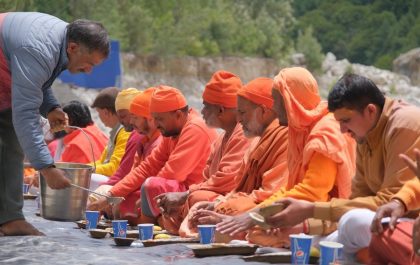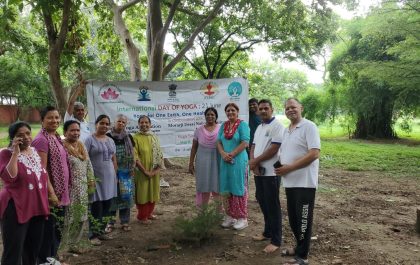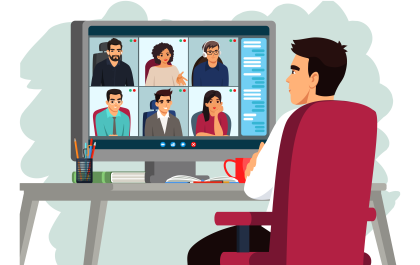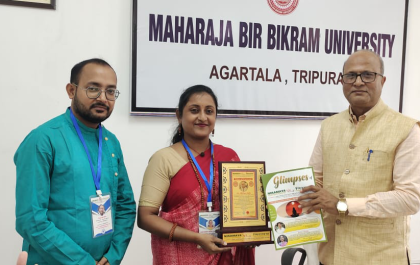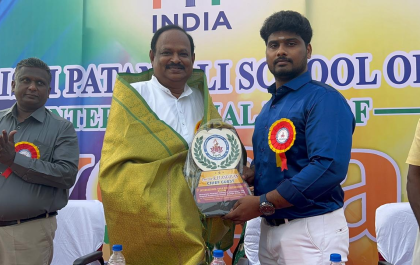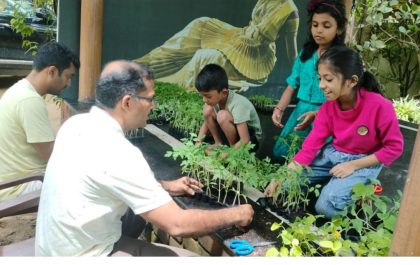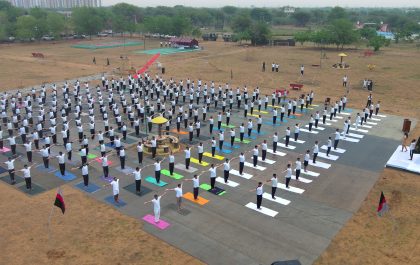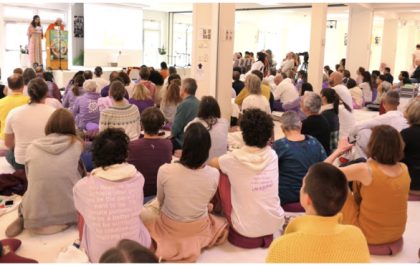by Shri N. Elumalai, PhD Scholar (Yoga Science), MAHER
This Low Lunge Pose Yoga Mudra is a variation of Anjaneyasana (Crescent Low Lunge Pose). In this variation, the upper body has the arms locked behind you in Yoga Mudra, making it a beautiful hip and a heart opening practice. This pose variation enhances strength and flexibility by providing great stretch in the body. This great stretch in the body, particularly opening up the hips and stretching the hamstrings, helps to release tension from the neck and upper back while giving a gentle sretch in the neck, to look up; and shoulders, to bind hands behind. This is an intermediate level pose, which needs a good warm-up. Yoga teachers can include the practice of Crescent High Lunge Shoulder Opener as a preparatory pose, slowly helping students improve in opening the shoulders and gaining better balance. This variation lays a good foundation to prepare the body for poses like One Legged King Pigeon Pose, Twisted Low Lunge Pose. etc.
STEPS
First, you have to start the pose with normal breathing and then, while exhaling you can get into Downward Facing Dog (Adho Mukha Svanasana).
Once you are comfortably holding in the position of Adho Mukha Svanasana, with exhalation, place your right foot in front just beside your right hand, making sure that your right knee and right ankle are in one line.
After that, you can gently drop your left knee.
On your inhaling, you can lift your arms and torso.
And then, lift your arms behind your body in Yoga Mudra so that you can feel the stretch in your shoulder.
In order to deepen the lunge, shift your balance onto the right foot so that you can feel the stretch in both the legs.
Now, you can extend your lower back while keeping your spine engaged. Pull your arms backwards so that your chest is pushed up and open up as much as possible.
You can hold in this position as long as you can balance yourself and maintain breathing normally. The balance plays an important role in this pose.
To release the pose, with exhalation gently put your arms on the mat and get back to Adho Mukha Svanasana.
Finally, you can release the pose and relax in Balasana (Chid Pose) for a while.
Once you feel comfortable, you can counter the stretch on the other side following the above instructions.
Lastly, you can slowly release the pose and come back to relax in Balasana.
Benefits
This pose stretches and strengthens the shoulders, arms, chest, upper back, upper abdomen, lower back, psoas, quadriceps, hamstrings, and hips, while engaging these muscles to balance the body in a gentle backbend.
The binding action of the hands behind the back improves shoulder mobility, overall flexibility, and ensures the backbend is smooth and effortless.
It opens the chest and heart, stimulates the intercostal (breathing) muscles, improves lung function, and promotes better pranic flow and blood circulation throughout the body, thereby energizing the practitioner.
This pose supports the digestive system by enhancing oxygenated blood flow, helps relieve soreness in the lower body, and is especially useful for arthritis.
It brings a deep stretch to the arms, shoulders, psoas, and hamstrings while opening the chest, hips, and heart.
This asana prepares the body for deeper backbends and can be included in Vinyasa flow as a great warm-up for swimmers, cricketers, basketball/volleyball players, laborers, artists, and teens involved in sports or professions requiring repetitive use of arms and shoulders.
LIMITATIONS
Students having any injury or surgery related to hip and shoulder joints, especially seniors with weak body frame, extreme knee pain or muscular injuries relating to quadriceps or hamstrings, suffering from HBP, with limited flexibility in the arms and shoulders, instability due to rotator cuff tears, tendonitis, arthritis, or feel any pain or instability in the shoulders, with trauma, anxiety, depression, migraine, or any heart related issues, pregnant and postnatal women and during pregnancy, must avoid this practice.
The practitioners holding it for a longer period of time can get the maximum benefits and avoid any injuries and muscle pull.
